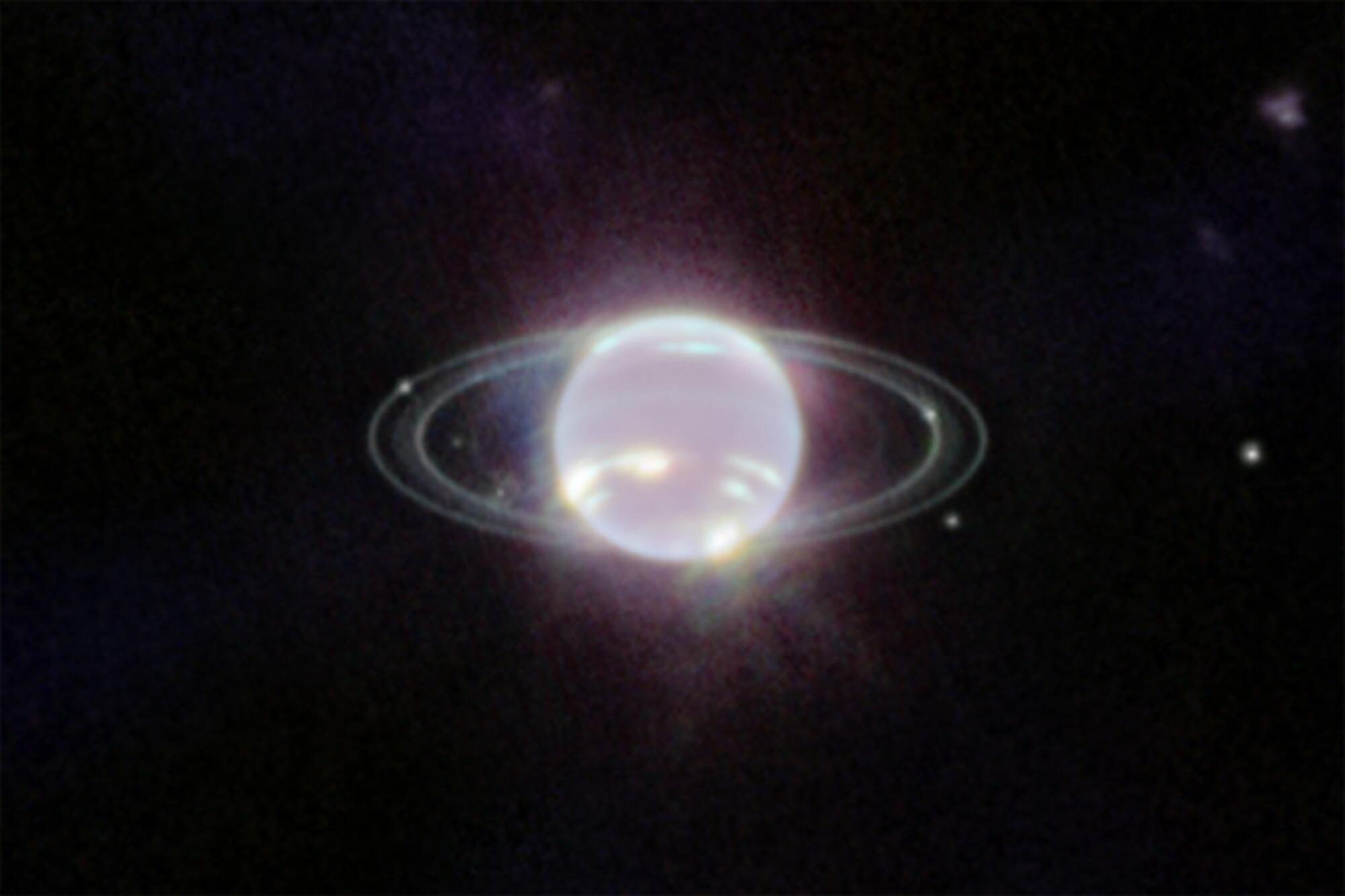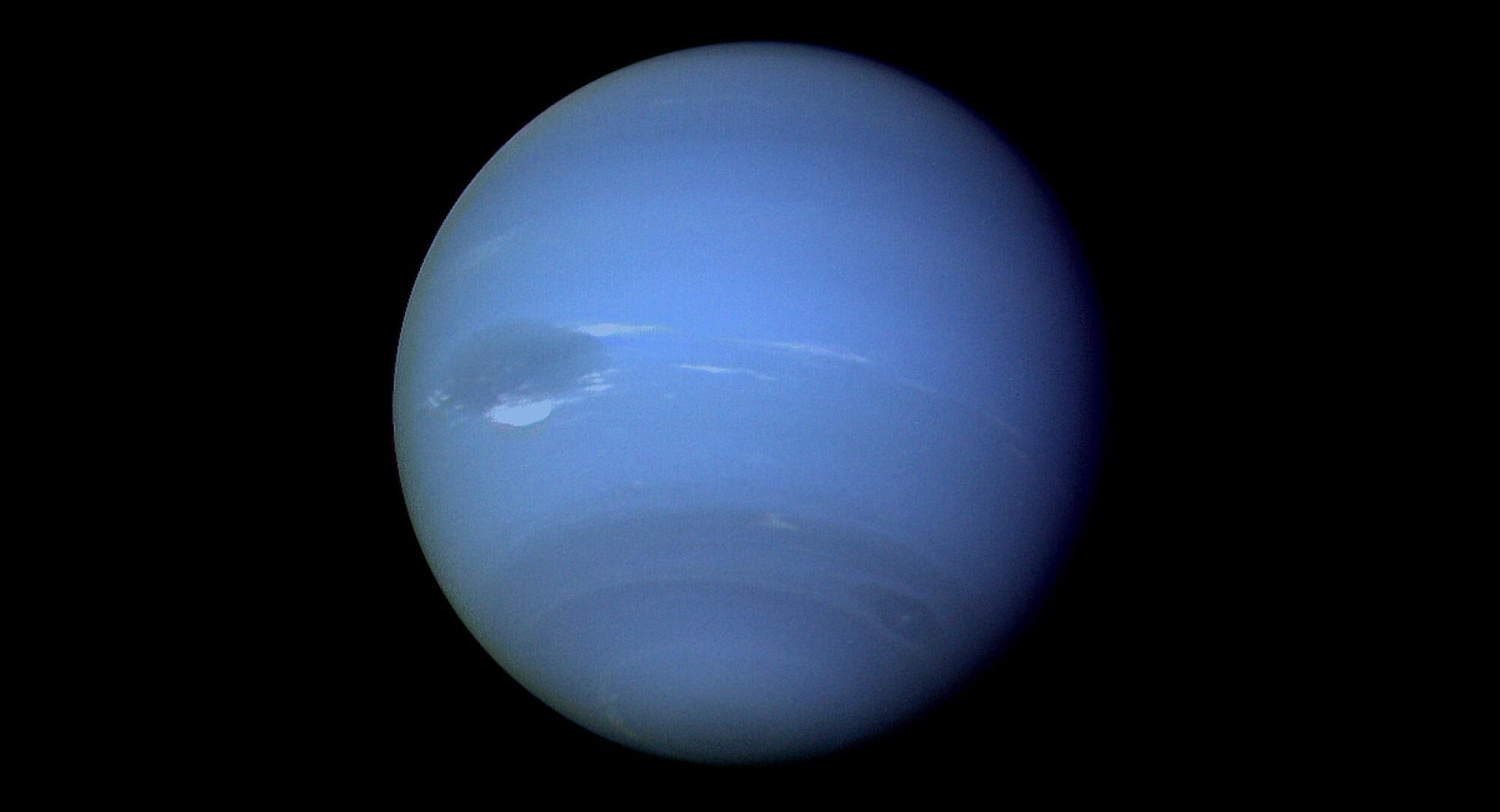
Neptune does not appear blue with Webb’s Near-Infrared Camera (NIRCam). In fact, the methane gas so strongly absorbs red and infrared light that the planet is quite dark at these near-infrared wavelengths, except where high-altitude clouds are present.
(NASA, ESA, CSA, STScI)
- Share via
Neptune has got the rings.
NASA’s James Webb Space Telescope has provided an image of Neptune that shows the planet’s rings — the clearest view of the rings of this distant planet in more than 30 years.
NASA’s Voyager 2 became the first spacecraft to observe Neptune during its flyby in 1989. In addition to several bright, narrow rings, the Webb image clearly shows Neptune’s fainter dust bands.

In the summer of 1989, NASA’s Voyager 2 became the first spacecraft to observe the planet Neptune, its final planetary target, passing about 3,000 miles above Neptune’s north pole.
(NASA)







